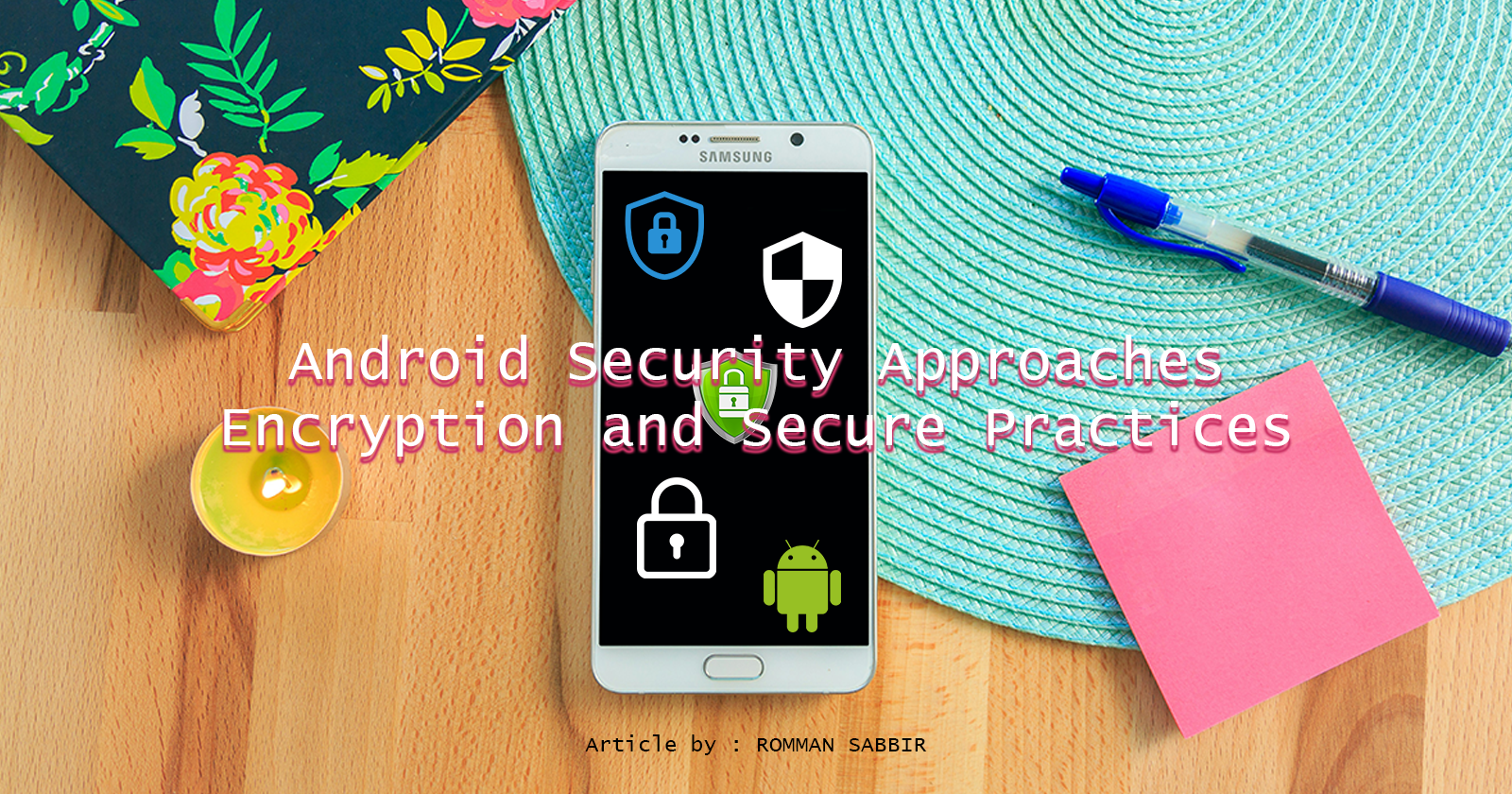Android Security Approaches: Encryption and Secure Practices
 Romman Sabbir
Romman Sabbir
In this article, we explore essential security techniques and encryption methods to protect Android applications. Covering a broad spectrum of security approaches, we highlight the use of data encryption (AES, RSA, and Android KeyStore), secure user authentication (biometrics, OAuth 2.0), and network security (TLS, certificate pinning). We also focus on securing application code through obfuscation, protecting local storage using encrypted databases and files, and ensuring device integrity with SafetyNet and SELinux policies. By implementing these practices, developers can safeguard sensitive user data, prevent attacks, and maintain secure app environments.
Contents are:
1. Data Encryption
AES (Advanced Encryption Standard): Encrypt sensitive data such as user credentials, tokens, or files.
RSA (Rivest-Shamir-Adleman): Use for secure data transmission, such as key exchange or signing sensitive information.
KeyStore API: Securely generate and store cryptographic keys in a hardware-backed keystore.
File-based Encryption (FBE): Encrypt files individually to ensure better security on file access.
Network Security Configuration: Define policies to enforce HTTPS connections and avoid insecure communication.
2. Secure User Authentication
Biometric API: Integrate fingerprint or face authentication for a more secure login experience.
OAuth 2.0 & OpenID Connect: Secure authorization framework for token-based authentication with external services.
Secure Password Storage: Hash and salt passwords using PBKDF2, bcrypt, or Argon2 to ensure password security.
3. Application Security
ProGuard/R8: Minimize and obfuscate code to prevent reverse engineering and tampering.
App Signing: Sign your APK with Android's signing mechanism to validate the authenticity of the app.
Integrity Check (SafetyNet): Detect whether the device running your app is rooted or compromised using Google's SafetyNet API.
Google Play App Signing: Use Google’s key management for securing the signing keys.
4. Network Security
TLS (Transport Layer Security): Ensure encrypted communication over the network by enforcing TLS/SSL for data transfer.
Certificate Pinning: Prevent man-in-the-middle attacks by ensuring the server’s SSL certificate is valid and hasn’t been tampered with.
VPN Support: Implement VPN capabilities or work with VPN providers for secure network communication.
Firewall & IDS Integration: Create rules for traffic filtering and detect intrusions in network communication.
5. Secure Storage
SharedPreferences Encryption: Use Android's EncryptedSharedPreferences to securely store small data (e.g., tokens, flags).
SQLite Database Encryption: Use libraries like SQLCipher for encrypting local databases.
External Storage Encryption: Secure files stored on external storage by encrypting them before saving.
6. App Security Features
Runtime Permissions: Use Android’s runtime permission model to request only the permissions your app needs, and do so at the point of use.
Dynamic Security Configurations: Dynamically adjust security settings based on user roles or app environment.
Tamper Detection: Implement checks to detect any unauthorized app modifications (e.g., code tampering, re-signing).
7. API Security
Token-based Authentication (JWT): Use secure token mechanisms (e.g., JSON Web Tokens) for API authentication and session management.
Rate Limiting & Throttling: Implement server-side rate limits to prevent abuse of your API.
Input Validation & Sanitization: Avoid injection attacks by validating and sanitizing all user inputs, particularly for server-side requests.
8. Device Security
Secure Boot: Leverage Secure Boot mechanisms on devices to prevent booting from tampered software.
SE Linux Policies: Enforce security-enhanced Linux policies to limit the actions that apps can perform on a device.
Device Encryption: Encourage users to enable full-disk encryption for protecting data at rest.
Enterprise Mobility Management (EMM): Implement EMM policies to enforce security settings on corporate devices.
9. Backup Security
Encrypted Backups: Ensure app data backups are encrypted when stored in cloud services like Google Drive.
Key Backup Management: Use Android’s Backup Manager to securely back up data while encrypting keys.
We will explore each section in details in the next 9 part articles….
That’s it for today. Happy coding…
Subscribe to my newsletter
Read articles from Romman Sabbir directly inside your inbox. Subscribe to the newsletter, and don't miss out.
Written by

Romman Sabbir
Romman Sabbir
Senior Android Engineer from Bangladesh. Love to contribute in Open-Source. Indie Music Producer.